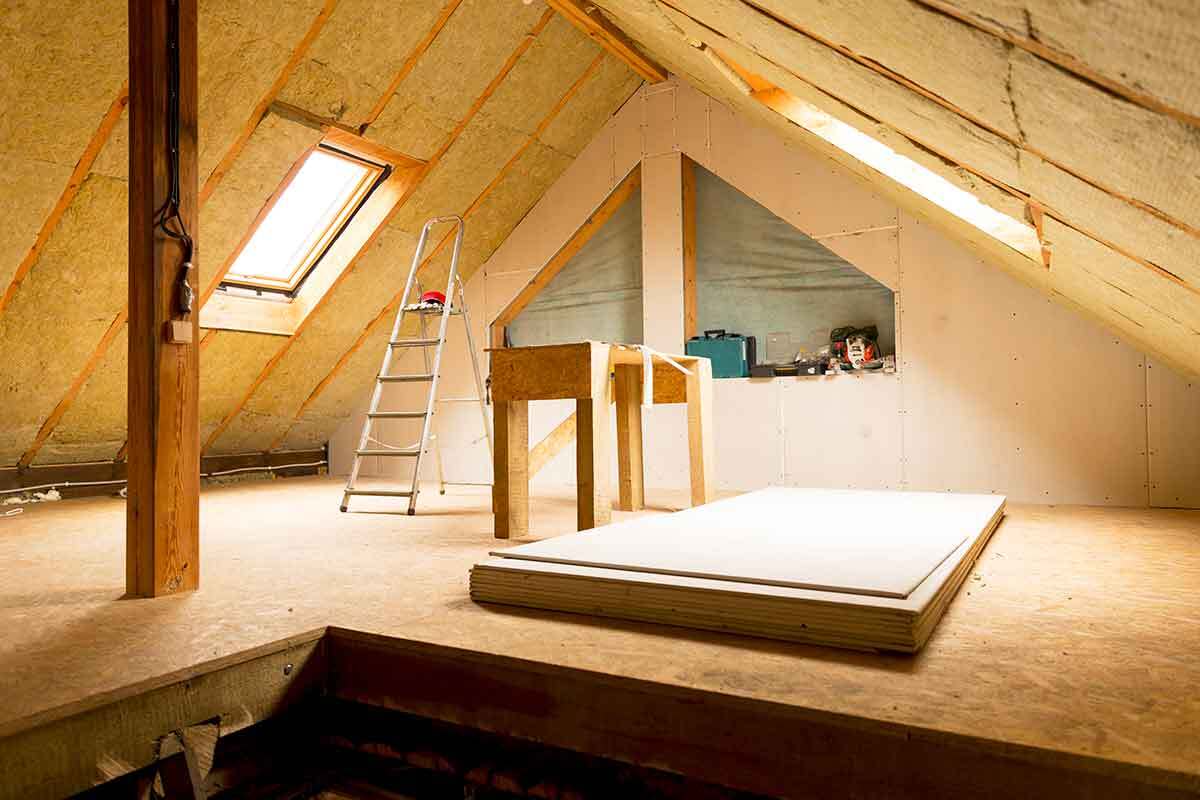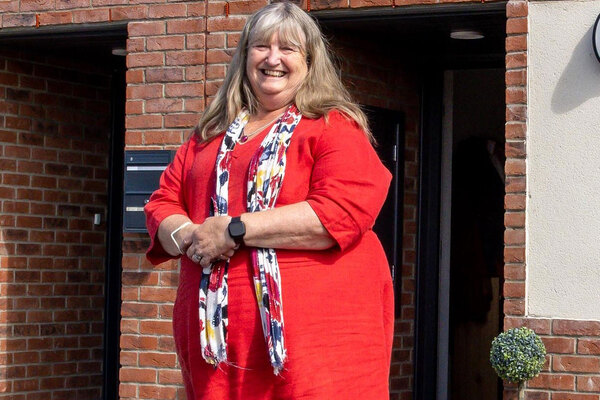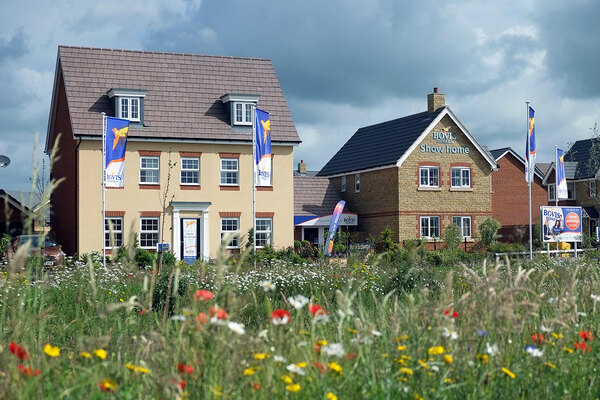Meet Scotland’s first zero-carbon building minister
Patrick Harvie is one of the first Green politicians to hold a ministerial role in the UK, and it is a big one for the housing sector’s future – in charge of zero-carbon buildings and tenants’ rights. So what does all this mean for Scotland’s social landlords and the changes ahead? Lucie Heath finds out. Photography by Martin Hunter
Patrick Harvie never expected to become a government minister. Despite being a prominent member of the Scottish parliament for almost two decades, the co-leader of the Scottish Greens tells Inside Housing he had “more or less written off the idea that my generation of Greens would get into government”.
Things changed after the Scottish elections in May last year. First minister Nicola Sturgeon approached the Greens after the Scottish National Party (SNP) failed to gain an overall majority.
“If we get this right, we’ve got the potential to transform our built environment, both to meet that transition to net zero, but also to meet the aspiration of adequate housing as a human right”
After three months of negotiations, the SNP and the pro-independence Greens agreed a power-sharing deal that committed the latter to voting with the former on a shared policy platform, and gave ministerial positions to Mr Harvie and Lorna Slater, the Green co-leaders. They are the first Green politicians to hold ministerial roles in any part of the UK.
For Mr Harvie, that role is one of critical importance to our sector – a new position of minister for zero-carbon buildings, active travel and tenants’ rights. Inside Housing caught up with him over Zoom to talk about rental reform, decarbonisation and how the Greens hope to influence housing policy in Scotland.
Politics from an early age
Growing up in Dumbarton, a town between Glasgow and Loch Lomond, Mr Harvie was involved in politics from an early age. “My parents had always been fairly political,” he says. “My mum was a Green Party activist back in the ’80s, when no one from the Green Party ever got elected anywhere.”
Mr Harvie spent his university years in Manchester, but returned to Glasgow to work as an LGBT youth worker. Around this time in the late-’90s, Mr Harvie, who is bisexual, also had his first interactions with the newly created Scottish parliament. He campaigned for the repeal of Section 28, part of the Local Government Act 1988 introduced under prime minister Margaret Thatcher. It prohibited the “promotion of homosexuality” by local authorities and, under it, teachers could lose their jobs if they talked or taught about same-sex relationships.
The campaign was successful; repealing the law became one of the first pieces of legislation enacted by the Scottish Parliament in 2000, three years ahead of England. Working on the campaign made Mr Harvie want to become more involved in politics and led to him joining the Scottish Greens.
“It’s not a fundamental change of direction, but it’s about increasing the scale of ambition”
In 2003, Mr Harvie “suddenly found [himself] in parliament” after a particularly good showing by the Greens in the Scottish elections. As an MSP for Glasgow, housing has always been a focus for him. During his first term in parliament, he sat on the Local Government and Communities Committee, which scrutinises the government on housing issues.
Now, after almost 20 years in opposition, Mr Harvie has a greater opportunity than ever before to influence housing policy. How have the Greens used this influence so far? Some of the changes have been “incremental”, Mr Harvie says. The SNP’s manifesto committed to delivering 100,000 affordable homes by 2032; the power-sharing agreement edged this up to 110,000.
“It’s not a fundamental change of direction, but it’s about increasing the scale of ambition,” he says.
The influence of the Greens has been more pronounced on other matters, Mr Harvie argues, pointing to a commitment in the power-sharing agreement to introduce a national system of rent controls.
The proposal forms a central part of the Scottish government’s New Deal for Tenants, a wide-ranging policy document published by Mr Harvie and Shona Robison, the secretary for social justice, housing and local government, last December. Other proposals include a ban on evictions each winter and the creation of a housing standard that applies to all tenures.
“I’ve been making the case for rent controls for over a decade, and for years the responses I was getting were, ‘Nobody cares about this’, ‘There’s no case for rent controls’, ‘Nobody wants it’”
The SNP has dipped its toes into the idea of rent control before, through its Rent Pressure Zones. They were introduced in 2016 and gave local authorities the power to apply to have rents restricted in certain areas.
However, Mr Harvie says he was always “sceptical” of this policy and takes credit for the new approach, under which rent controls will be applied nationally.
“I’ve been making the case for rent controls for over a decade, and for years the responses I was getting were, ‘Nobody cares about this’, ‘There’s no case for rent controls’, ‘Nobody wants it’,” he says.
Mr Harvie was right to be sceptical about Rent Pressure Zones: the policy is quite widely viewed as a failure and there are currently no areas in Scotland where rent control has been applied. He believes one of the problems that has “held back” the policy is the requirement for local authorities to demonstrate a need for rent control in their area. This is why he believes a national framework is the answer.
“Rent controls can be a way of giving landlords rent security and stability,” he argues, adding that the system can be designed to ensure the “more disreputable or more exploitative end of the market disappears”.
However, Mr Harvie is tight-lipped when asked for detail about what such a system might look like. He is equally light on detail when asked about the government’s plan to introduce a ban on evictions over winter, and crucially whether this will apply to the social sector. In a typically ministerial answer, Mr Harvie says the government is still considering responses to the consultation on the proposals, admitting that it will “take some time” to deliver on its ambitions.
One of the many consultation responses the Scottish government will be reading is one submitted by the Scottish Federation of Housing Associations (SFHA). In its response to the New Deal for Tenants, the SFHA warned that the government will be unable to deliver on its ambition of giving everyone access to an affordable tenancy if it does not give social landlords more support to keep developing. It warned that social landlords may soon be in a position where they cannot afford to develop because of other pressures, including soaring construction costs and the transition to net zero.
Mr Harvie says the government is “under no illusions” about the scale of the challenge facing housing associations, particularly when it comes to funding decarbonisation. Mr Harvie says the government is trying to maximise private investment into the sector, which will play a key role in funding the transition to net zero, alongside government funding.
“There are forms of patient capital investment out there, pension funds and so on, that don’t necessarily need a big, fast return… but which could, if we could get the context right, see investment in housing, both the quality and the transition to net zero, as an attractive place to put their money,” he says.
“If we get this right, we’ve got the potential to transform our built environment, both to meet that transition to net zero, but also to meet the aspiration of adequate housing as a human right.”
Net zero
This brings us nicely to the other key part of Mr Harvie’s portfolio: net zero buildings. Do the government’s policies go far enough?
“I imagine I would be advised to defend the government and say, ‘Yes, of course we’re doing enough’,” he responds, allowing a crack in his ministerial veneer. “I don’t think any country should be complacent about this agenda.”
What does this mean for the housing sector? To date, Scottish social landlords have had some of the strictest energy-efficiency targets in the UK. The majority of social landlords successfully hit the target of ensuring all homes have an Energy Performance Certificate (EPC) of Band D or C, depending on property type, by 2020.
The next target facing social landlords is that all homes must have an EPC of B, wherever practically possible, by 2032. However, after Inside Housing spoke to Mr Harvie, the Scottish government announced that it would review these targets, temporarily suspending them in the process.
“I understand entirely why some people say: ‘Why are we still building homes with gas boilers?’ But right at the moment, when we only have a few thousand installations of zero-emission heating systems per year and we need to grow that supply chain, it actually makes sense to be replacing all the inefficient boilers and higher-carbon fuel sources that are off the gas grid”
As it stands, these targets are much stricter than any target for English social landlords, which do not yet have a sector-specific target. However, it is not as ambitious as the target the Welsh government is currently consulting on, which could see social landlords forced to improve their stock to a standard of EPC A by 2033. Surely the Scottish government should be going further?
“We’re working to make sure that we’re as ambitious as we can be, but also conscious of the fact that this is a big ask of the sector, alongside the provision of adequate housing,” Mr Harvie says.
Mr Harvie talks about the challenges of retrofitting Scottish tenements, which often house flats of various tenures, and hints that the government is considering encouraging social landlords to take on private rented stock to bring it up to standard.
“We’re going to need to give social landlords the ability, the resources and the time to do that,” he says, in a response that is likely to be welcomed by the sector.
Mr Harvie says the government is taking an “iterative” approach to enforcing higher energy-efficiency standards on new builds. An update to the building regulations earlier this year included changes to energy standards, while bigger changes are expected in 2024, he says.
“I understand entirely why some people say: ‘Why are we still building homes with gas boilers?’ And we will be phasing that out in time, but right at the moment, when we only have a few thousand installations of zero-emission heating systems per year and we need to grow that supply chain, it actually makes sense to be replacing all the inefficient boilers and higher-carbon fuel sources that are off the gas grid,” he says.
While some climate activists may criticise the government for not moving fast enough here, the appointment of Mr Harvie to this role shows that the Scottish government understands the significant role housing will play in the transition to net zero.
David Bookbinder, director of the Glasgow and West of Scotland Forum of Housing Associations, tells Inside Housing: “It’s really welcome that zero-carbon housing has such a prominent place in a ministerial portfolio, given the scale of the challenge we’re facing, especially on retrofitting existing stock.”
This is echoed by the SFHA’s chief executive Sally Thomas, who says the trade body looks forward to continuing to work with Mr Harvie to “deliver more green, warm, energy-efficient homes”.
Before our conversation draws to a close, Mr Harvie reflects on an “extraordinary moment” just before the first COVID-19 lockdown, when he took his mum to one of the weekly school climate strikes that were taking place in Glasgow.
“You have these three generations of angry climate activists, all of us acknowledging that if the world had listened back in the ’70s, ’80s and ’90s and started making that transition, it could have been done slowly and easily and perhaps more cheaply in the long run,” he says. “Are we in the right place? No, we’re not. We shouldn’t be at the starting point of this transition. We should be further ahead. But we are where we are and the challenge now is to make the maximum progress that we possibly can.”
Sign up for the IH long read bulletin
Already have an account? Click here to manage your newsletters













